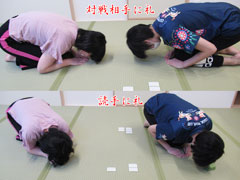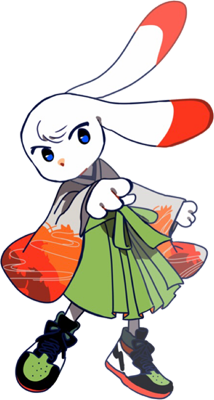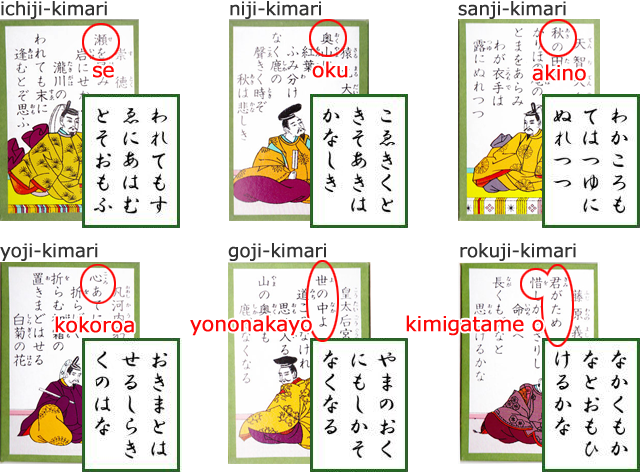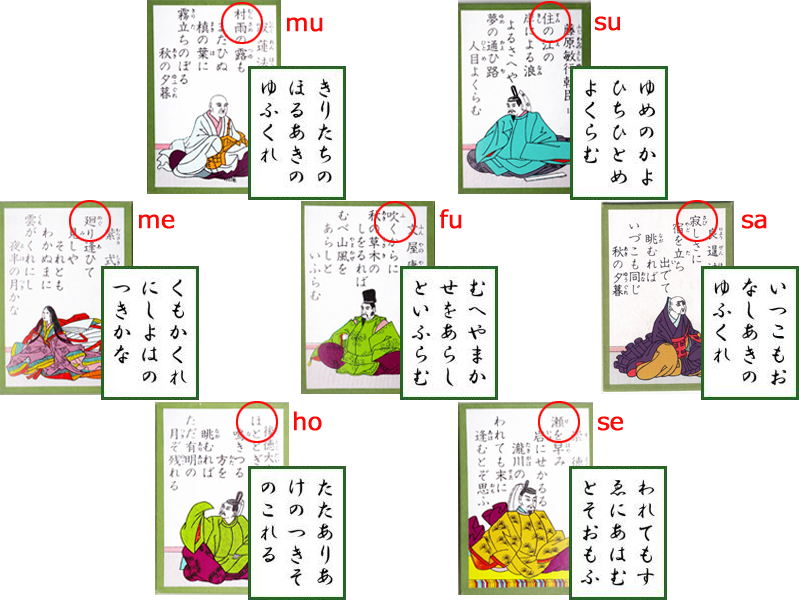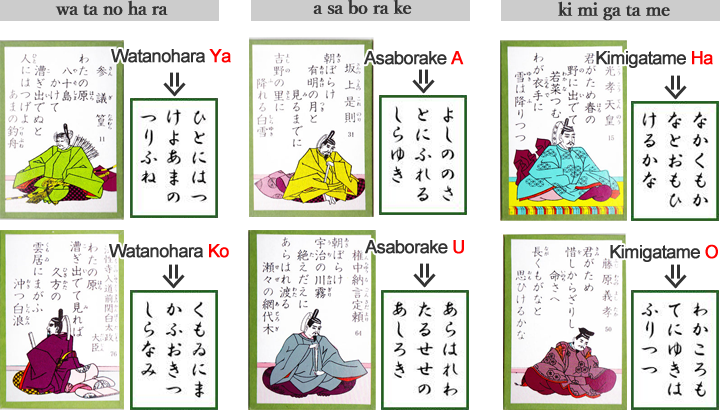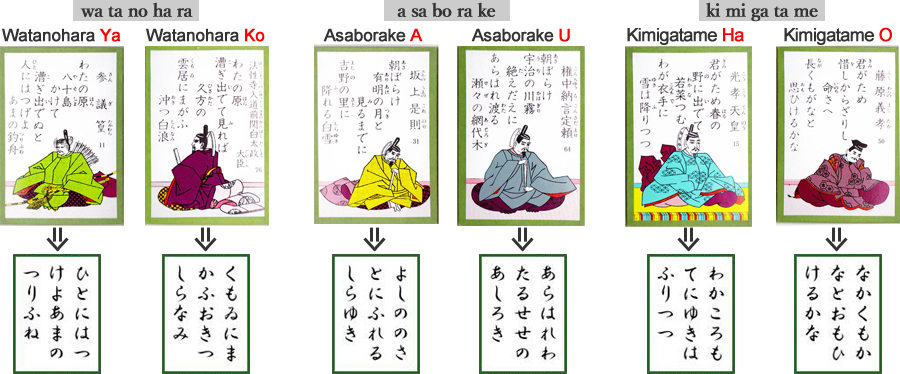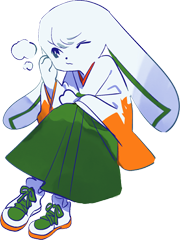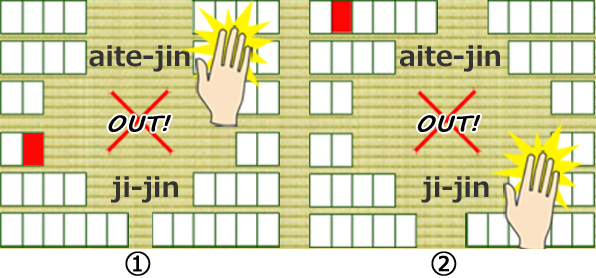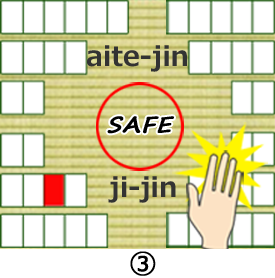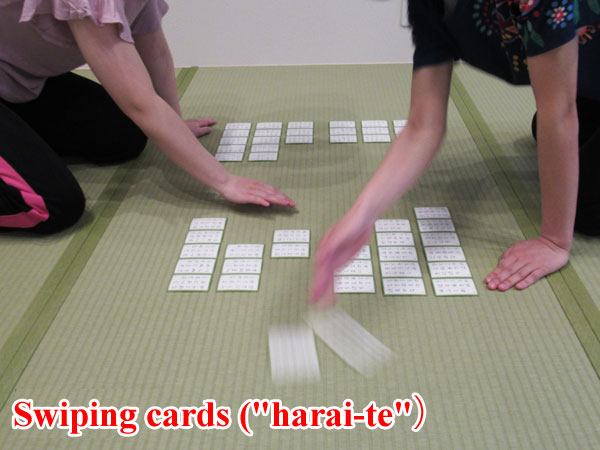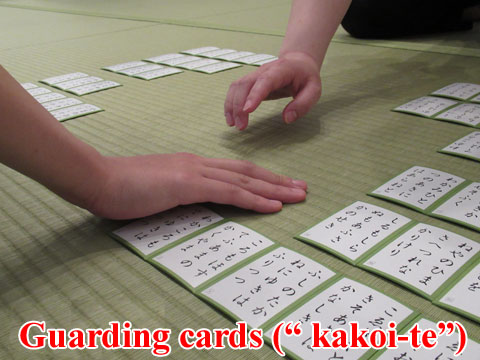
This is a movie showing the flow of the game.
Please pay attention to the volume.
You win if you get all the cards before your opponent does!
Kyogi karuta is a game using
the "Ogura Hyakunin Isshu" Karuta cards.
Kyogi karuta is a competition in
which two players try to take the card (tori-fuda)
corresponding to the reciter’s yomi-fuda
faster than their opponent.
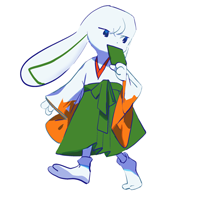
The rules of "Kyogi karuta" are quite simple
"Kyogi karuta" is a competition in which two players try to take the card (tori-fuda) corresponding to the reciter’s yomi-fuda faster than their opponent. On yomi-fuda, the whole tanka is written. On tori-fuda, only the second half of the poem is written in hiragana. The players use 50 tori-fuda in a game. First, they mix all 100 tori-fuda face down on the tatami, and each player randomly selects 25 cards, for a total of 50 cards.
The players place their 25 cards facing up inside their territory.During the match, the reciter will read yomi-fuda one by one.The players will try to take the card faster and reduce the number of cards in their territories. The player who clears their territory first is the winner. The rules of Kyogi karuta are simple. However, in order to win in Kyogi karuta, you need to have both mental and physical strength cultivated through daily training.
On yomi-fuda, the whole tanka is written.
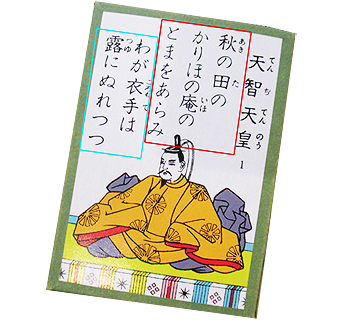
On tori-fuda, only the second half of the poem is written in hiragana.
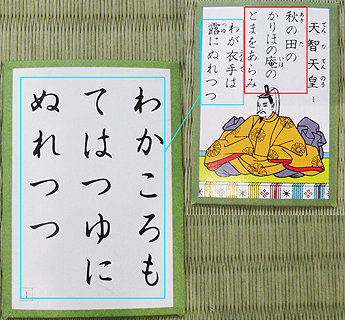
Although Kyogi karuta is a highly competitive game, players should value courtesy. When a match starts, and when it is over, players pay respect by bowing to each other and to the reciter.
